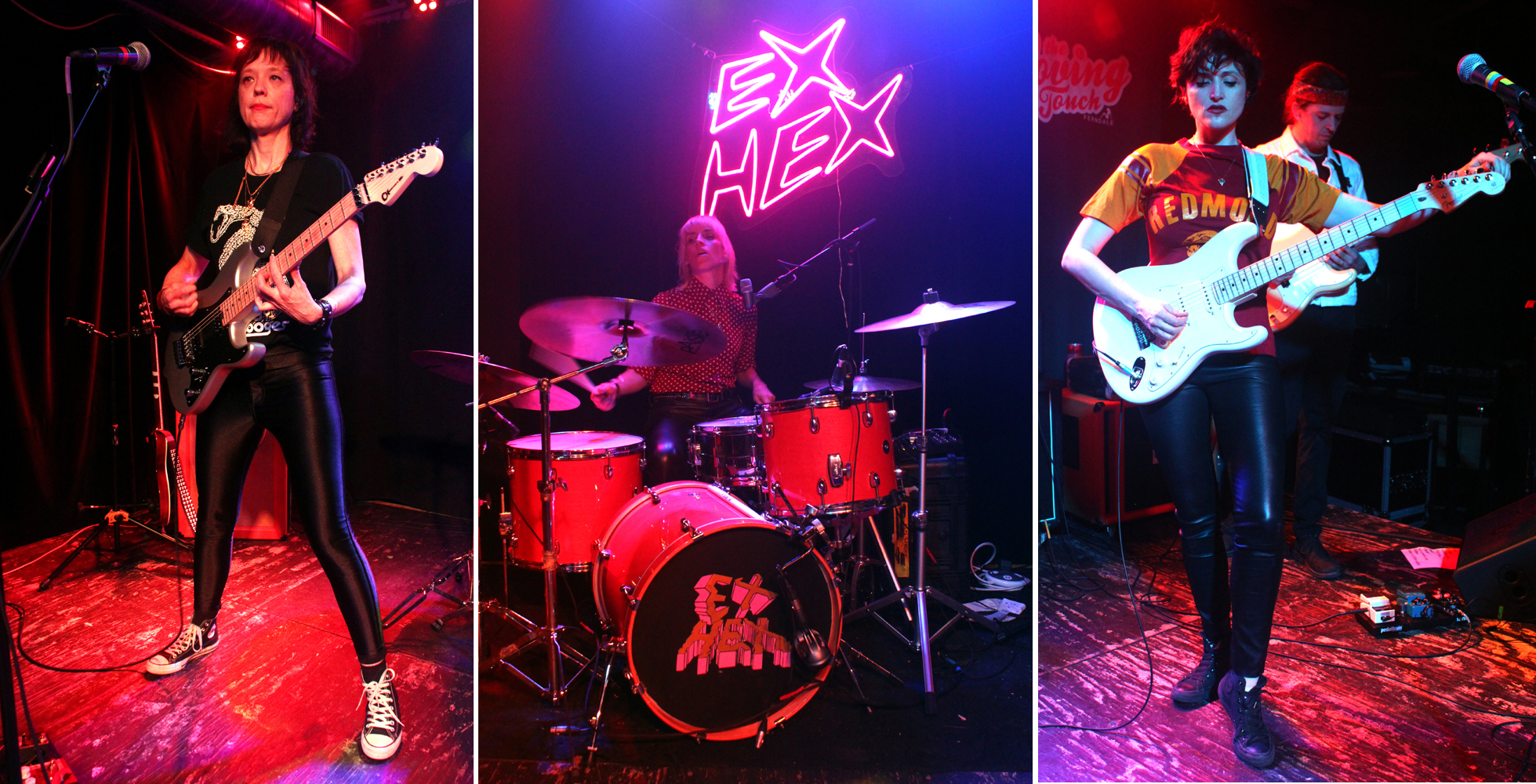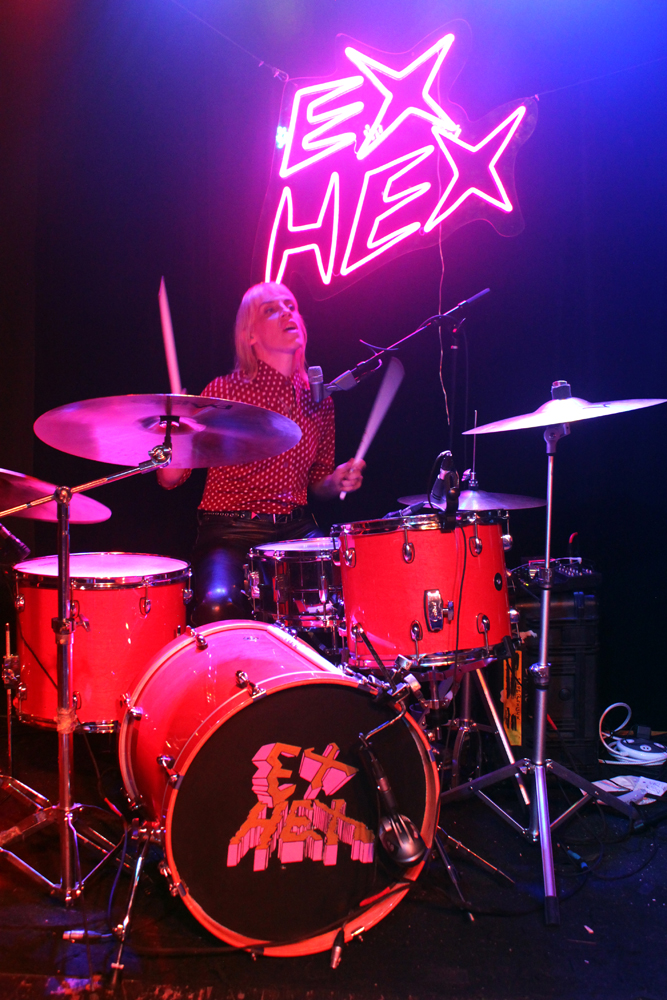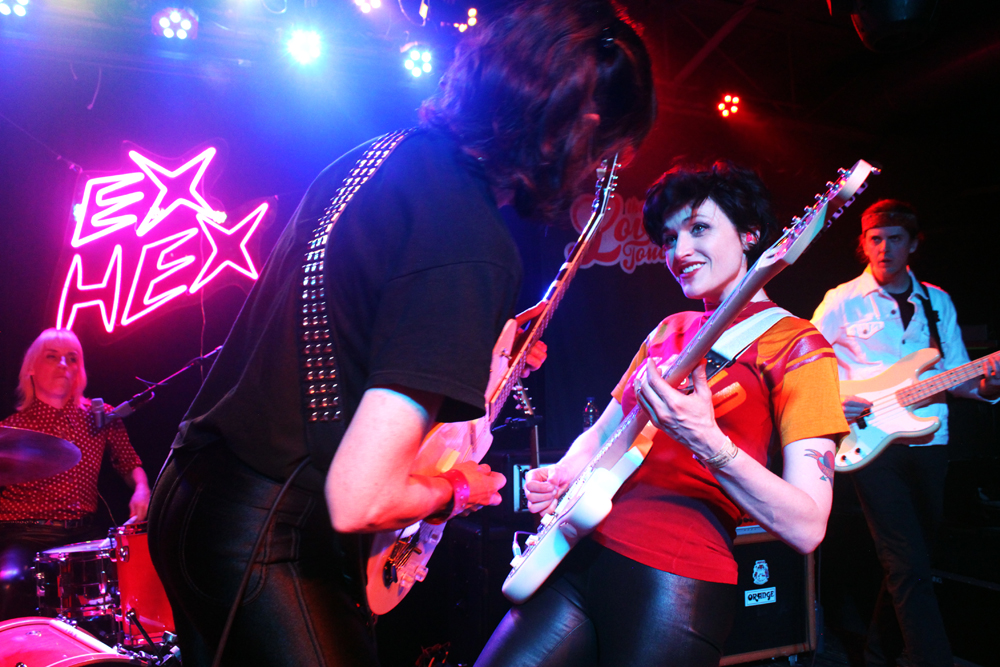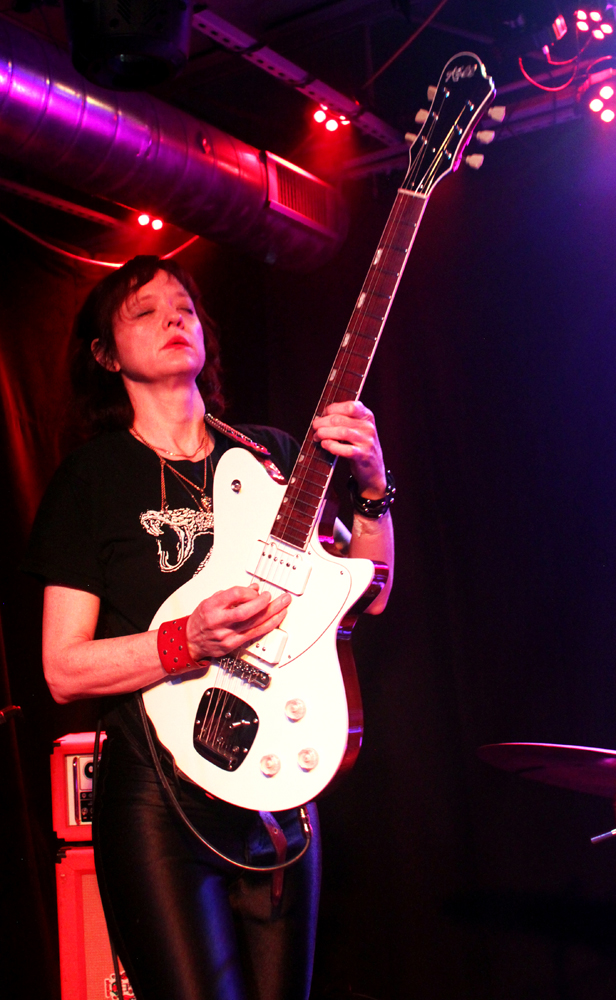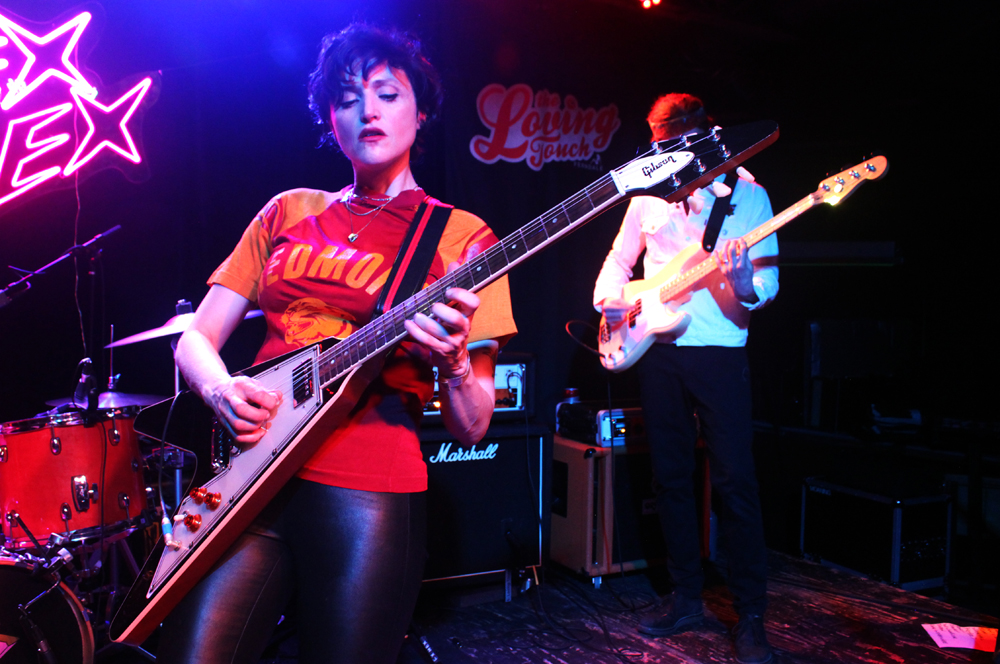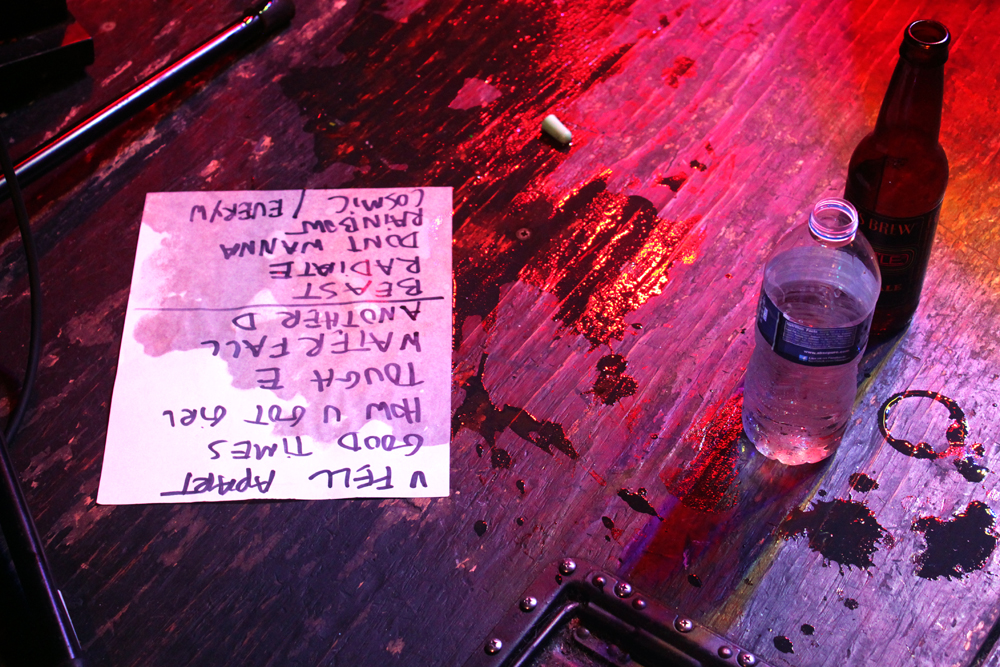We entered the county seat of Delaware along Sandusky Street, passing the campus of Ohio Wesleyan University. We found a parking spot on West Winter Street and proceeded on foot to investigate some of the local businesses. Our first stop was Endangered Species, The Last Record Store on Earth. It’s also sometimes shortened to Pat’s Record Store for owner Patrick Bailey. Perched behind the counter, the long gray-haired proprietor appeared just how you might imagine someone who has been in the record trade for 40 years to look. On a previous visit, his friendly banter included some affectionately-intended (??) mocking comments regarding our purchase of an REO Speedwagon greatest hits cd. Our selections this time of “The McGarrigle Hour” by Kate and Anna McGarrigle, and Hayes Carll’s “KMAG YOYO” escaped editorial comment.
Across Winter Street from the record store is Bun’s Restaurant, a local institution since 1864 when it opened as a bakery. We’d eaten there on a previous visit to Delaware and our present county trip meal dance card was already full, so we had to give Bun’s a miss this time, but I’d recommend it to others. The neon “Bun’s Restaurant” sign that hangs from an arch over the middle of the street makes it easy to find.
There are plenty of shops to check out on Sandusky Street, but we spent our time in the city’s two main antique stores: Sandusky Street Antiques and Delaware Antique Mall. The former offers a nicer, higher end selection of goods, while the latter is larger and features more varied pickings. We came away however, without any purchases.
As the clock neared 4 p.m., our agreed upon check-in time for our night’s lodging, we returned to our car and made the short drive to the west end of the street and parked in front of the Winter Street Inn, a 142-year old Victorian-era home that was converted into a bed & breakfast by owners Rodger and Debbie in 2006. Rodger met us at the door and led us upstairs where the Humphries Room awaited us. Named for a previous owner of the house who owned a thriving Ford dealership, the room featured silk wallpaper, an antique Persian rug, and a comfortable king-sized bed which provided us a spot for a late afternoon siesta.
It was dark by the time we returned outdoors. We left the car behind and walked down Winter Street, appreciating the architecture of the Italianate homes that filled the lots, many of which appeared to be serving as frat houses, or were owned by people who liked decorating their facades with large Greek letters.
We stepped into the Staas Brewing Company, Delaware’s first (and only?) brewpub. We sat at stools at the bar and requested a couple of porters; an 8% Baltic Porter for myself and a 6.4% Vanilla Porter for Michele. Most of the chairs in the bar were occupied, mainly by folks who could have been grad students or parents of students from nearby OWU. The television screens were muted, but contained sports-related programs. The beers were good and the ambiance was relaxed and inviting.
For a total contrast in clientele, our next stop was the Hamburger Inn Diner on Sandusky Street. It’s another longtime Delaware institution, dating back to 1932. Closing time is 10 p.m. or midnight during the week, but its open all night on weekends. Most of the stools at the U-shaped counters were occupied when we entered, but we found a couple at the back of the restaurant. Fox News was playing on the television and a Blue Lives Matter flag was displayed opposite an American flag. There were lots of tattoos and piercings and overheard drama about people doing other people wrong. And that was just the staff! But everyone was friendly and helpful and the food was good and exactly what I was expecting. I had a cheeseburger and Michele had a chili dog. We shared our sides of onion rings and waffle fries topped with bacon and cheese.
Feeling a bit stuffed after our meal, we rolled south down Sandusky Street and around the corner onto William Street. We paused at a historic marker memorializing the birthplace of Rutherford B. Hayes, nineteenth president of the United States. The marker was erected in 1926, the same year the Hayes home was torn down. In its place is now a BP filling station, referred to on a website I came across as the Rutherford B. Hayes Birthplace Gas Station.
Continuing around another corner, we found Roop Brothers Bar, or Roops, as the locals call it. “Where live classic rock and blues music lives!” The building is a nondescript red brick structure with stacked beer barrels out front. Inside, the mostly middle aged crowd was preparing for a night of good rockin’ with local favorites, The Stolen Fire. The band was formed in 2011 by four professors from Ohio Wesleyan University. I stepped up to the bar before the music started and ordered a pint of Brew Dog’s Radio Zombie Phone In, a Russian Imperial Stout. I noticed most of the other drinkers were ordering their brews in cans and bottles. There was also Jägermeister available on tap!
We stayed for about an hour, listening while the band ran through a series of Zeppelin covers followed by “Pinball Wizard” and Bowie’s “Ziggy Stardust.” They sounded good and the crowd was into them. After my nursed beer finally emptied, we stepped into the nippy night and strolled back to our B&B. We slept soundly.
I awoke the next morning early enough to shower before breakfast. The bathroom for our room was so small, the washbasin was located outside it, near our bed. As I sat on the toilet, I was mere inches away from the mirror that hung from the back of the door. While performing my morning necessary, there was the spitting image of myself, pants down around his ankles, gawking at me. It was a bit unnerving. I’d look away, but every time I snuck a peek, there I was, still staring.
Perv!
Promptly at 8 a.m., we descended the winding staircase to the first floor. In the dining room, Rodger already had our places set. There was a bowl of mixed fruit and granola in yogurt, and on a side plate, a cherry-filled donut. Coffee and juice filled our cups and when we were ready, the main entrée was brought out consisting of a sunny side egg atop a muffin, accompanied by slices of melon and pineapple.
After our meal, we hung out in our room for awhile, getting our money’s worth. At 11 a.m., when we checked out, teeny random snowflakes had begun to fall. I snapped a photo of our B&B as well as the building across the street, the former George W. Campbell home, which was originally built in 1854. It was designed with Romanesque and Norman Revival architectural features which included a round tower and arched windows and doorways made of locally-mined blue limestone. It now serves as the Delaware County Cultural Arts Center.
We drove northwest out of Delaware along West Central Avenue and then veered north on State Route 203 up to the village of Radnor for another architecturally unique structure. At the entrance to the local graveyard is the Radnor Cemetery Lych Gate. Traditional in England and Wales, lych gates are covered gateways used to shelter coffins until clergymen arrive for burial. The Radnor version was designed by a local architect over a century ago to commemorate the early settlers of the town who emigrated from Wales. It’s built of locally-quarried stone and features two openings: a larger one for a horse-drawn hearse and a smaller one for mourners. The gate was also given a tower resembling a church steeple to give it an ecclesiastical style.
We drove east from Radnor for about four miles until arriving at U.S. Route 23 about a mile north of the entrance to Delaware State Park. I thought a little outdoor exercise might work off our morning donut. We wound through the park before stopping near the camp check-in station. Near there was the beginning of the Lakeview Trail. For awhile, the path was dry and pleasant. The sky was a solid cloud, but we could see Delaware Lake. The lake was formed in 1951 after the construction of a flood control dam. The state park was dedicated a year later.
Once the trail looped away from the water on its way to connecting to the Briar Patch Trail and the return to the parking lot, big muddy patches began getting in our way. We tried walking around them, but the sides of the trail were lined with briars and needle-filled plants. The Sunday morning stroll became a slog as more and more sections of the trail contained standing water. One can attempt to be very Zen about it all and concentrate on a particular mantra to distract from the trail conditions, but when that repeated word becomes, “fuckfuckfuckfuckfuckfuckFUCK!” then you realize your attempt at serene meditation is, well, in a word, fucked.
After a couple miles of less than ideal hiking, we arrived back at the lot and spent some time scraping off the brown slop that had caked to our boots before allowing ourselves back in the car.
As we drove back to Delaware, the snowflakes hitting the windshield became bigger and wetter. We had made plans to meet my sister and her daughter at the 1808 American Bistro at 1 p.m. for Sunday brunch. Katanya and Jennifer introduced us to this very fine restaurant a year ago and we looked forward to returning. I considered myself lucky when I spotted an open parking spot directly across the street. After we parallel parked, the car behind pulled up next to us and rolled down a window. My sibling and niece were inside and were a bit miffed because they had seen a car vacate that prime parking spot and had quickly driven around the block so they could get it. “Sorry!” I weakly responded, although I couldn’t stop laughing.
Once we sat down to eat, all thoughts of stolen parking spaces were forgotten as we were all easily distracted by the food. The restaurant has been open for over a decade and has a deservedly good reputation for its Sunday brunch. I had the shrimp and grits which was outstanding with shrimp and andouille sausage bathing in polenta and a creamy Cajun sauce. We all enjoyed a leisurely two-hour meal, which was long enough for a layer of snow to accumulate on the windows of our cars.
We said our goodbyes and swept our vehicle of snow and drove a few blocks away to the Richard M. Ross Art Museum on South Sandusky Street. It’s housed in OWU’s Humphreys Art Hall, a former United State Post Office building. I was looking forward to seeing the current exhibit, “Yesterday, Today, Tomorrow,” a collection of curated works by African American artists and artists from the African Diaspora.
When we entered the museum, we saw right away that there was some sort of to-do taking place. There were lots of well-dressed people milling about and socializing. (We later learned the Delaware Community Chorus was hosting a reception for its donors.) Michele was hesitant about proceeding, but I really wanted to see the art and figured so long as we weren’t turned away, we could still do so. Michele’s misgivings were reinforced when we were somewhat strong-armed into wearing nametags. I acquiesced quickly on the assumption that we’d be less conspicuous if we had nametags like everyone else. I was wrong. We were both greeted by name by complete strangers on multiple occasions. I’m not particularly fond of being so familiarly hailed by someone who doesn’t know me.
We did our best to circulate through the galleries, but it was near impossible at times as the hors d’oeuvres-munching, wine-swilling crowd didn’t seem to have a problem socializing directly in front of pieces while completely ignoring the art.
I was able to get close to one piece and was contemplating it when a guy ambled up next to me and asked with a laugh, “What does that say to you?” I find the perusal of art in a gallery to be a somewhat personal experience and regardless of whether or not I have a specific reaction to a piece, I don’t want to discuss it with a stranger. I had the feeling he didn’t want to seriously deliberate its merits anyway, but rather was just make a joke of it. I responded by ignoring him. After enough awkward silence passed, he finally took his plastic wine glass and moved on with a laugh and a mutter about still waiting for the art to say something to him. I continued on my way while screaming in my head, “I just want to be left alone to look at the art!”
Michele later told me she did her best to display a demeanor that said, “Leave me alone,” but was unsuccessful time and time again. Apparently, whatever talents the Chorus possesses in singing and fundraising far exceed the ability of its members to read body language.
I can’t imagine we resembled the normal philanthropist, what with our attire of cargo pants and mud-caked boots, but perhaps we were mistaken for the reclusive and deep-pocketed donors, Mr. and Mr. “Anonymous” who always appear at the top of contributor lists.



